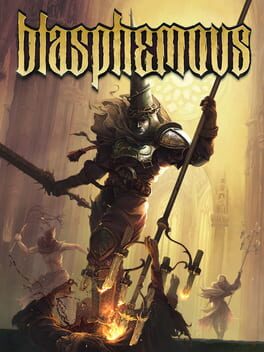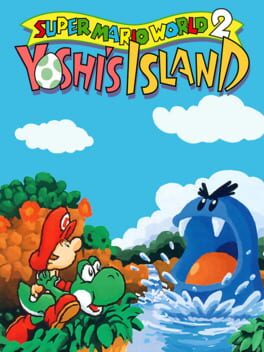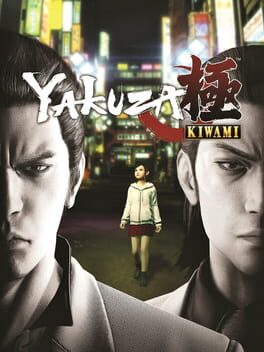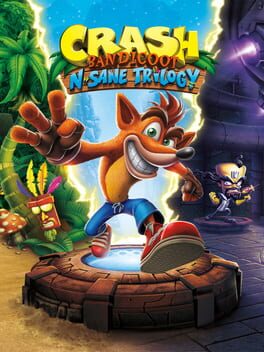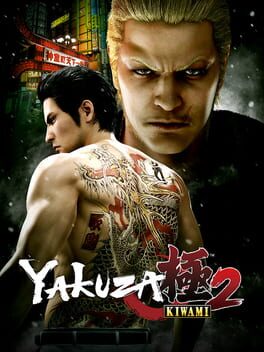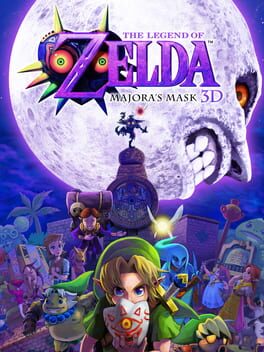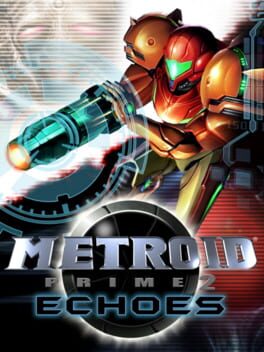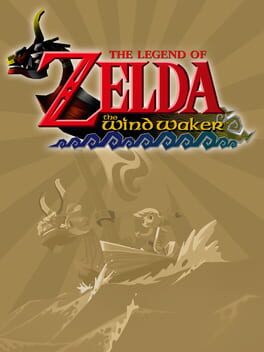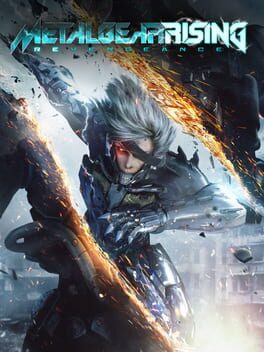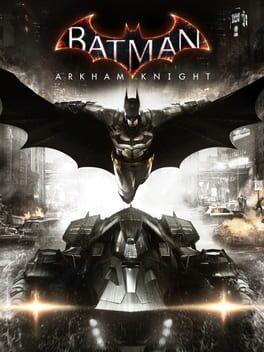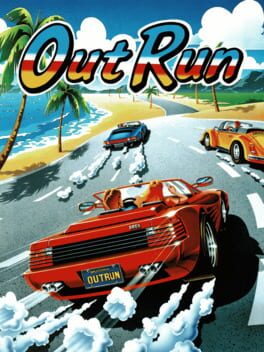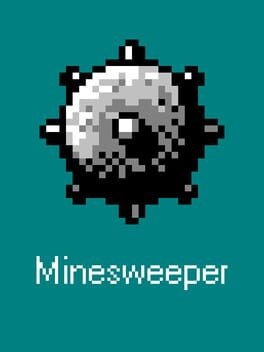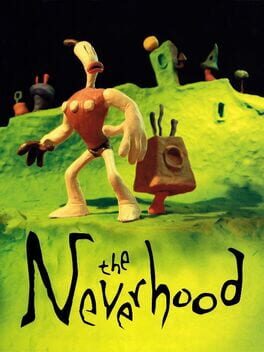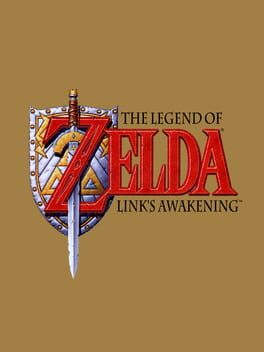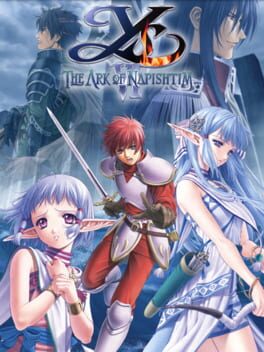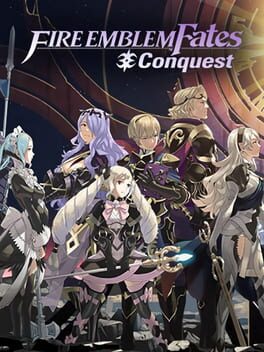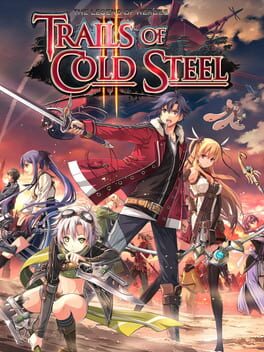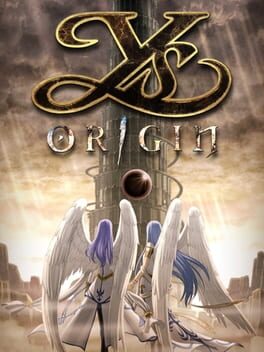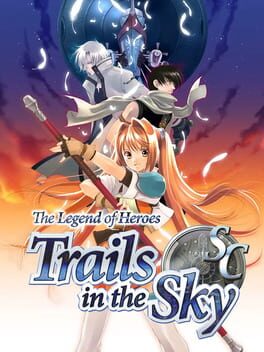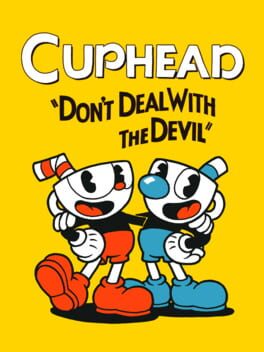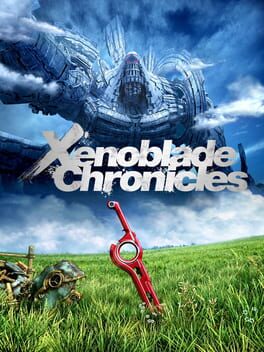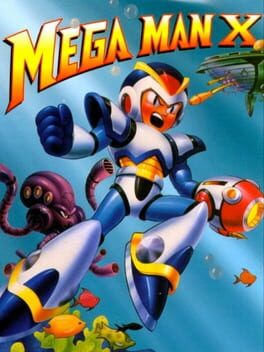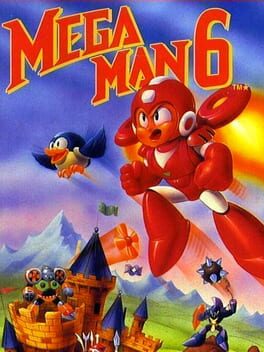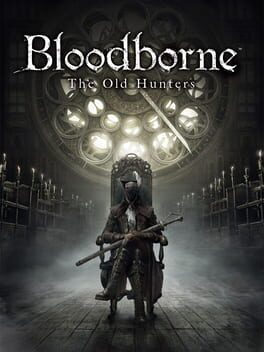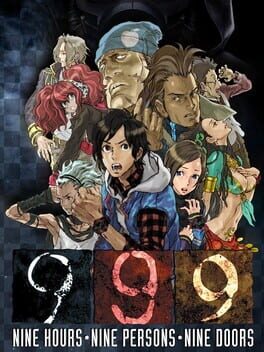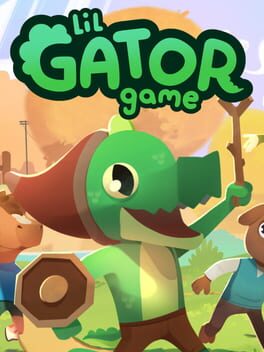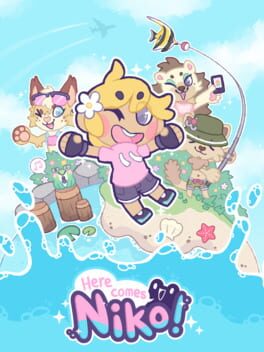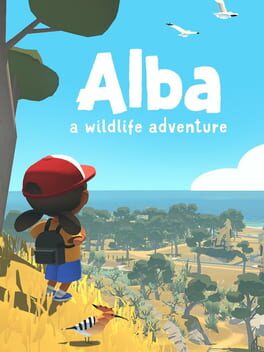maximilyun
155 reviews liked by maximilyun
Blasphemous
2019
Excellent sprite work, wonderfully crafted world building, impeccable voice acting. All of this is let down by the quite frankly frustratingly shitty combat, which leaves a sour taste in its wake.
This review contains some minor spoilers.
1. Bosses
It's very clear that this game draws an astronomic amount of inspiration from Dark Souls in every nook and cranny of the game, all the way down to the design philosophy of the bosses. Unfortunately, it fails to recognize what makes the bosses of the Soulsborne games any good. As a result of the 2D plane this game utilizes, the combat suffers heavily from bosses that use moves which necessitate an eagle eye to determine what course of action to take. Many bosses have moves that use the same animation as a startup for different attacks. Many of your deaths will be purely through RNG and the inability to telegraph what move the boss will use to strike you. It's a majority of guessing until the last frames of the startup, where you can actually determine the attack to be used.
Another facet of the boss that leaves behind a feeling of discontent is the lack of awe they bring. Consistently, vanquishing a boss in most of the bosses featured within the Soulsborne franchise will leave you feeling like you've overcome an insurmountable foe. That triumphant feeling of overcoming a boss is absolutely not present in this game. On every single one I fought, I audibly groaned at my victories. Displeased with the revelation that none of the bosses I encountered were interesting or captivating in any way at all. Beating them just had me feeling like “that's it?” it was upon my 3rd hour playing the game where I came to this realization, regardless, pressing on another 13 hours to actually beat the game. The final boss being the worst offender of this, I won the fight in less than a minute on my first attempt.
1.5. Mobs
Mobs and enemies encountered in the over world are an absolute joke. Genuinely futile. The only difficulty comes from the occasional abominable platform placement. Many times, the platforming will be your enemy more so than actual enemies. More on this later.
2. Combat
The upgrades are absolutely inconsequential, and I wholeheartedly believe you could beat the game without upgrading your weapons at all. The extra moves you get are so trivial, the best of the worst being the ranged weapon or the dash slice. Plunge attack, charge slash, and either of the combo finishers are completely unnecessary and have very few use cases during gameplay. You have to actively look for a scenario to use these because their usefulness depends on your determination to actually find a way to utilize them properly. The plunge attack especially is terrible because your vertical vision is so reduced and isn't helped much by the fact that changing your camera doesn't give much leeway for faraway vision.
3. Exploration
One of the few things about the game I actually enjoyed. Inevitably leading to its detriment. For some inexplicable reason, the entire upper half of the map has no waypoints whatsoever. Once you start truly exploring the lower half of the map, the devs decided to start hurling all the necessary waypoints, entirely neglecting the lack of northern waypoints until the midpoint of the game. Traversing elevators gets especially tiring when you have to run through the elevators with no way to simply teleport up to either of the important northwestern regions. Exploration as a whole is COOL!!! As stated earlier, this is one of the few parts of the game I found enjoyment in. Entering new areas fills you with a sense of awe. The backgrounds are wonderfully crafted. Musical references to its culture are beautifully incorporated. Many areas are eloquently made in reference to Spanish Gothic architecture and design. When you're able to pay no mind to the awful gameplay, it's truly a beautiful experience.
4. Platforming
Platforming in this game is quite honestly one of the BIGGEST fumbles this game makes. Throughout the entire exploration experience, I can absolutely safely say that one area of many gave me an actual challenge with its platforming. The rest of it is piss easy. Often times, the devs opt to use terrible enemy placement or bad obstacle placement to make platforming difficult and a chore to traverse. Namely, the swinging axes of the “Sleeping Canvases” area. Their inclusion is so extraneous and makes 0 sense for being present. Not much else to say other than what has been said. Bugs are also prevalent in quite literally only the platforming. Countless times, I have grabbed ledges from a noticeable distance above or below, failed to grab a ledge my character was pressed right up against, and teleported through floors. Bugs impact purely the platforming throughout my playthrough.
5. Music
Incredibly graceful.The use of Spanish instrumentals paired with the Christian symbology is unquestionably the best part about the game. Cantes de Confesión, Entregarás Tu Rostro a La Señora, and Coplas de Incienso are by far my favorite tracks the OST offers. Simply beautiful work.
6. Story & Sidequests
Not delving into the story/lore because the way that it is handled, it's pretty removed from the actual progression of the game outside the content that is spoon-fed to you through required interactions. That being said, it was okay, I suppose. I feel that too much information is packed into the “lore” button for items and weapons, which is quite annoying. Talking with the dead is a pretty cool mechanic, and some side quests provided a very cool dive into the world of Blasphemous.
CONCLUSION
Unfortunately, this is a game that doesn't stand up to the expectations that are set by the promotional content. I'm overall displeased with the game and moreover disappointed with the juxtaposition of eloquent visuals & music alongside terrible buggy gameplay. It manages to rope you in and keep you hooked until you realize that it's disappointing overall.
This review contains some minor spoilers.
1. Bosses
It's very clear that this game draws an astronomic amount of inspiration from Dark Souls in every nook and cranny of the game, all the way down to the design philosophy of the bosses. Unfortunately, it fails to recognize what makes the bosses of the Soulsborne games any good. As a result of the 2D plane this game utilizes, the combat suffers heavily from bosses that use moves which necessitate an eagle eye to determine what course of action to take. Many bosses have moves that use the same animation as a startup for different attacks. Many of your deaths will be purely through RNG and the inability to telegraph what move the boss will use to strike you. It's a majority of guessing until the last frames of the startup, where you can actually determine the attack to be used.
Another facet of the boss that leaves behind a feeling of discontent is the lack of awe they bring. Consistently, vanquishing a boss in most of the bosses featured within the Soulsborne franchise will leave you feeling like you've overcome an insurmountable foe. That triumphant feeling of overcoming a boss is absolutely not present in this game. On every single one I fought, I audibly groaned at my victories. Displeased with the revelation that none of the bosses I encountered were interesting or captivating in any way at all. Beating them just had me feeling like “that's it?” it was upon my 3rd hour playing the game where I came to this realization, regardless, pressing on another 13 hours to actually beat the game. The final boss being the worst offender of this, I won the fight in less than a minute on my first attempt.
1.5. Mobs
Mobs and enemies encountered in the over world are an absolute joke. Genuinely futile. The only difficulty comes from the occasional abominable platform placement. Many times, the platforming will be your enemy more so than actual enemies. More on this later.
2. Combat
The upgrades are absolutely inconsequential, and I wholeheartedly believe you could beat the game without upgrading your weapons at all. The extra moves you get are so trivial, the best of the worst being the ranged weapon or the dash slice. Plunge attack, charge slash, and either of the combo finishers are completely unnecessary and have very few use cases during gameplay. You have to actively look for a scenario to use these because their usefulness depends on your determination to actually find a way to utilize them properly. The plunge attack especially is terrible because your vertical vision is so reduced and isn't helped much by the fact that changing your camera doesn't give much leeway for faraway vision.
3. Exploration
One of the few things about the game I actually enjoyed. Inevitably leading to its detriment. For some inexplicable reason, the entire upper half of the map has no waypoints whatsoever. Once you start truly exploring the lower half of the map, the devs decided to start hurling all the necessary waypoints, entirely neglecting the lack of northern waypoints until the midpoint of the game. Traversing elevators gets especially tiring when you have to run through the elevators with no way to simply teleport up to either of the important northwestern regions. Exploration as a whole is COOL!!! As stated earlier, this is one of the few parts of the game I found enjoyment in. Entering new areas fills you with a sense of awe. The backgrounds are wonderfully crafted. Musical references to its culture are beautifully incorporated. Many areas are eloquently made in reference to Spanish Gothic architecture and design. When you're able to pay no mind to the awful gameplay, it's truly a beautiful experience.
4. Platforming
Platforming in this game is quite honestly one of the BIGGEST fumbles this game makes. Throughout the entire exploration experience, I can absolutely safely say that one area of many gave me an actual challenge with its platforming. The rest of it is piss easy. Often times, the devs opt to use terrible enemy placement or bad obstacle placement to make platforming difficult and a chore to traverse. Namely, the swinging axes of the “Sleeping Canvases” area. Their inclusion is so extraneous and makes 0 sense for being present. Not much else to say other than what has been said. Bugs are also prevalent in quite literally only the platforming. Countless times, I have grabbed ledges from a noticeable distance above or below, failed to grab a ledge my character was pressed right up against, and teleported through floors. Bugs impact purely the platforming throughout my playthrough.
5. Music
Incredibly graceful.The use of Spanish instrumentals paired with the Christian symbology is unquestionably the best part about the game. Cantes de Confesión, Entregarás Tu Rostro a La Señora, and Coplas de Incienso are by far my favorite tracks the OST offers. Simply beautiful work.
6. Story & Sidequests
Not delving into the story/lore because the way that it is handled, it's pretty removed from the actual progression of the game outside the content that is spoon-fed to you through required interactions. That being said, it was okay, I suppose. I feel that too much information is packed into the “lore” button for items and weapons, which is quite annoying. Talking with the dead is a pretty cool mechanic, and some side quests provided a very cool dive into the world of Blasphemous.
CONCLUSION
Unfortunately, this is a game that doesn't stand up to the expectations that are set by the promotional content. I'm overall displeased with the game and moreover disappointed with the juxtaposition of eloquent visuals & music alongside terrible buggy gameplay. It manages to rope you in and keep you hooked until you realize that it's disappointing overall.
Persona 5 Royal
2019
I don't envy anyone who has to develop a new installment in a popular, on-going franchise with a passionate fanbase. But I personally believe in the philosophy that "less is more," and in the case of PERSONA 5 ROYAL, Atlus went all in on MORE, to the detriment of a great core concept and strong JRPG gameplay.
Compared to PERSONA 4 GOLDEN, my franchise entry point, P5R offers a longer story, larger cast, actual dungeons with intricate designs, a sizeable overworld, expansive amounts of confidants to befriend, dozens of activities to maximize stats, and an entire RNG mini-dungeon mode for loot grinding. P5R never leaves you bored, but for me, it often left me frustrated at how all this content is so poorly paced or optimized that the size of it all starts to feel less like a wealth of options and instead it feels like bloat.
The chief culprit is the narrative, which shows its best hand in the opening episode and never reaches that height again. The Komishida arc has such high stakes, an intense ethical conflict, and conveys it all through a unique dungeon, that the rest of the game's enemies and heists almost feel tame as a result. It also doesn't help that as the game goes on, it frequently throws up inconsistencies in tone that undercut a lot of the emotion it's so desperately trying to mine.
As this all plods on, the narrative structure gets SUPER tiring. P5R is eager to tell you everything at every moment. The flash-forward cutscenes tell you who the next bad guys are, the visual novel conversation scenes keep reminding you of the stakes and the rules, the CONSTANT in-game text message chains between you and your party keep hammering out the same points over and over. It's no surprise I'm bringing up INCEPTION, which P5R has a lot in common with: Not just its concept of altering one's cognition by invading their minds, but also the fact that the cast never stops dropping exposition, even into the climax of the story.
The turn based combat rules. Baton passing is an ingenious concept. I love the new elemental types and I think there are some fights in here that just go buck-wild once you get a good system of attacks and buffs into a rhythm. The system wherein you "hold up" defeated enemies at gun point to rob them is an ingenious mechanic, and it shows a lot of commitment towards making sure the stylistic and thematic ideas of the game make their way into the gameplay.
On the social simulation side, I enjoyed the new means of buffering your stats: Watching DVDs and reading books to get better skills, being able to work out or meditate to increase HP and SP. The one downside is that the game offers you so many ways to increase your social skills that I never bothered to get a part time job like I had to in P4G. There was no point in my mind: In-Game battles leave you drowning in cash, and playing an NES game will get my kindness up, so why the hell should I serve coffee? TOO MANY SYSTEMS at the expense of others, IMO. Additionally, once certain stats are maxed, activities like Baseball or Fishing just seem fruitless. Wish there had been more incentive to keep going with all of the activities.
There are winners and losers amongst the Confidants and they make the bulk of the side-content worth exploring. But the big anchor around the neck of the side quest system is how a majority of them are tied into Mementos, the RNG overworld mini-dungeon. I truly disliked how you would get text messages about people you've never met having problems, go find the correct RNG floor with the side quest boss, beat it, and then get a text message going "Good job, that person is happy now!" It's so impersonal and boring, despite the game's efforts to add emotional weight to every instance. A more intimate side-quest system where you actually meet the people you're helping would've felt more satisfying.
The amount of critical acclaim P5R gets ultimately puzzles me, but I guess sometimes "more is more." It's certainly one of the most captivating games in terms of design and UI aesthetics; but the ROYAL content feels very shoe-horned in, less like a meaningful extra chapter, and more like an awkward re-do of the first ending (and IMO, the two "endings" going back to back really reveal that they should've just picked one, as Maruki's plan is just the original threat, with extra steps).
I spent 82 hours on this, and I know others have spent hundreds. It's not a bad game, not by a long shot, and for your purchasing value, it's certainly something that will give you your money's worth. But I also think it's a game that's too long and unwieldy for its own good. It’s fitting, considering that the mark of an expert thief is ensuring a mark is so distracted that they never realize they're being robbed.
Compared to PERSONA 4 GOLDEN, my franchise entry point, P5R offers a longer story, larger cast, actual dungeons with intricate designs, a sizeable overworld, expansive amounts of confidants to befriend, dozens of activities to maximize stats, and an entire RNG mini-dungeon mode for loot grinding. P5R never leaves you bored, but for me, it often left me frustrated at how all this content is so poorly paced or optimized that the size of it all starts to feel less like a wealth of options and instead it feels like bloat.
The chief culprit is the narrative, which shows its best hand in the opening episode and never reaches that height again. The Komishida arc has such high stakes, an intense ethical conflict, and conveys it all through a unique dungeon, that the rest of the game's enemies and heists almost feel tame as a result. It also doesn't help that as the game goes on, it frequently throws up inconsistencies in tone that undercut a lot of the emotion it's so desperately trying to mine.
As this all plods on, the narrative structure gets SUPER tiring. P5R is eager to tell you everything at every moment. The flash-forward cutscenes tell you who the next bad guys are, the visual novel conversation scenes keep reminding you of the stakes and the rules, the CONSTANT in-game text message chains between you and your party keep hammering out the same points over and over. It's no surprise I'm bringing up INCEPTION, which P5R has a lot in common with: Not just its concept of altering one's cognition by invading their minds, but also the fact that the cast never stops dropping exposition, even into the climax of the story.
The turn based combat rules. Baton passing is an ingenious concept. I love the new elemental types and I think there are some fights in here that just go buck-wild once you get a good system of attacks and buffs into a rhythm. The system wherein you "hold up" defeated enemies at gun point to rob them is an ingenious mechanic, and it shows a lot of commitment towards making sure the stylistic and thematic ideas of the game make their way into the gameplay.
On the social simulation side, I enjoyed the new means of buffering your stats: Watching DVDs and reading books to get better skills, being able to work out or meditate to increase HP and SP. The one downside is that the game offers you so many ways to increase your social skills that I never bothered to get a part time job like I had to in P4G. There was no point in my mind: In-Game battles leave you drowning in cash, and playing an NES game will get my kindness up, so why the hell should I serve coffee? TOO MANY SYSTEMS at the expense of others, IMO. Additionally, once certain stats are maxed, activities like Baseball or Fishing just seem fruitless. Wish there had been more incentive to keep going with all of the activities.
There are winners and losers amongst the Confidants and they make the bulk of the side-content worth exploring. But the big anchor around the neck of the side quest system is how a majority of them are tied into Mementos, the RNG overworld mini-dungeon. I truly disliked how you would get text messages about people you've never met having problems, go find the correct RNG floor with the side quest boss, beat it, and then get a text message going "Good job, that person is happy now!" It's so impersonal and boring, despite the game's efforts to add emotional weight to every instance. A more intimate side-quest system where you actually meet the people you're helping would've felt more satisfying.
The amount of critical acclaim P5R gets ultimately puzzles me, but I guess sometimes "more is more." It's certainly one of the most captivating games in terms of design and UI aesthetics; but the ROYAL content feels very shoe-horned in, less like a meaningful extra chapter, and more like an awkward re-do of the first ending (and IMO, the two "endings" going back to back really reveal that they should've just picked one, as Maruki's plan is just the original threat, with extra steps).
I spent 82 hours on this, and I know others have spent hundreds. It's not a bad game, not by a long shot, and for your purchasing value, it's certainly something that will give you your money's worth. But I also think it's a game that's too long and unwieldy for its own good. It’s fitting, considering that the mark of an expert thief is ensuring a mark is so distracted that they never realize they're being robbed.
Demon Turf
2021
How hard is it to make a fun game where we progress through one level after another? The poor level design in a game like this is the most unbearable part. I would have been very happy if it was a platforming game that offered fast fun like Mario. Instead, it tried to build an open world design and city logic. The game tells something for the first 1 hour. I just want to play, man.
For years I considered myself not a fan of Yoshi's Island, where was the fluid momentum driven platforming of Super Mario, why had it's taut level design (already beset by the tyranny of ghost houses) been replaced by this sprawl? But one of the things I value most about Super Mario is the way it gives you more tools than you need to succeed, in a genre where often feels that you are simply playing Simon Says with the game developer, the fluid physics, the clever level design and numerous power ups allow you to believe that you are beating your own path through the games many challenges, and in Yoshi's Island this feeling remains, the accident (in the Aristotelian sense) changed, but the substance remains. As such, the ineffable quality of Super Mario is wholly intact, that quality that leaves you asking your own game design questions every time; What if the whole game was a single big level? What if it were two player and you could pass eggs or even baby Mario between yourselves as a means of overcoming obstacles? What if Yoshi swallowed you and turned you into an egg, how would that feel? What if after eating a watermelon, Yoshi spit the seeds at me, and tender welts rose on my porcelain flesh? What if Yoshi became the mother-father to my own children, as he was the surrogate to Mario? Why does he wear shoes all the time, I would like to take them off, and give his aching feet a much needed massage after a day of adventuring around his island with our child, we would be so happy.
Metroid Dread
2021
For a series whose monumental reputation rests largely on its worlds and a game saddled with the weight of doing right by that reputation, Metroid Dread surprised me in just how much it ended up being about its protagonist. Stuck in suspended animation character-development-wise since the disastrous Other M (discounting the proof of concept found within MercurySteam's Metroid 2 remake), Samus Aran emerges here more as the collectively imagined version of herself than any actual past iteration. She's faster, nimbler, punchier, cooler; cutscenes showcasing these traits feel closer to how Monty Oum and Smash Bros trailers depict her than even Team Ninja's extravagant take, let alone her decidedly unflashy feats in Metroids 1-4.
As a result, the world of ZDR is built more to showcase Samus than vice versa. This feels like the edge on which people's reactions to Dread will split; likely not into a strict love it/hate it dichotomy but rather into "love it" and several variations on "I enjoyed a lot/some of it, but..." Samus is polished to such a sterling state that only a purist or freak (no offense to freaks, they're great) would find fault in and of herself. It's a deviation, sure, but every 2D Metroid has deviated from the previous one in terms of handling and abilities. Furthermore, most of the moments that approach extreme "this ain't your parents' Samus" territory are brief and limited to cutscenes. But the other deviations Dread takes, deliberately or not, have their drawbacks.
The music is my biggest gripe. Since its NES title screen, Metroid has featured some the moodiest tone-setting tracks in video games. Dread's soundtrack serviceably quickens the pulse but is largely forgettable. Nothing grooves like the surface theme of SR388 or pounds like Norfair Ancient Ruins or chills like Crisis Mission. It's often too loud for its own good, detracting from some stellar sound design of enemies and environments (play this game with over-ear headphones). Mechanical crunchiness elevates the EMMI from what it looks like on its own (a DARPA robot circa 2027) to what it feels like in-game (a cyberhellhound sicced on you by MechaSatan himself). Usually a series that wields silence and ambient noise beautifully, Dread's soundtrack abhors a vacuum to its own detriment; only when deep underwater does it briefly approach the ambiance of its predecessors. It just doesn't have the range, sorry.
Relatedly, Dread is a game that struggles to slow down and soak things in. Samus literally cannot walk (without turning invisible first), and you can breeze along the equator of an area without much thought and at times without much memory of what you went through. I found that when I first ventured off the critical path to wander for upgrades and background details in other areas, merging back onto the game's central highway was disorienting. You're better off leaving a marker at your location when you decide to deviate than using them to identify potential new openings. This speaks to a solid structural core in Dread's design, but one that feels like it must be enjoyed primarily on its terms rather than your own. I intend to replay this game and 100% it on hard, so it remains to be seen if there's richer exploration possibilities that didn't occur to me first time around.
These issues combine to diminish the sense of atmosphere. ZDR is gorgeously rendered and has a lot to compliment aesthetically, but it mostly plays things safe in its inspiration. Zones follow basic elemental patterns and come with the expected hazards: lava hurts, leaves don't support your weight, water limits your ability to jump. The fact that many of the biomes are mediated by facility structures makes sense plot-wise, but mitigates the sense of dynamism and nature; it also largely drops the early premise of environmental puzzles requiring inter-room thinking. It was disappointing to enter a powered-down area, finally feeling a change of pace and tone, only to find the light switch pretty quickly with no surprises or consequence. Environments each have stories to tell but, like Super before it, they don't contain much mystery in and of themselves (Ferenia and Elun being exceptions that prove the rule). ZDR is thus more a playground for Samus than an alien world seeking to thwart her at every turn. To be fair, "playground" undersells it--unless you grew up with a full Disneyland in your backyard--but you see my point. Again, another playthrough with greater attention to the background may offer more than I appreciated this time around.
But let's return to Samus as a character in a fiction. MercurySteam and Nintendo were likely both understandably wary of a more vocal Samus, though I think that choice undermines Dread as the plot sequel to Fusion. The game seems nervous to let her be as reflective as that game, leaving Adam in an awkward middle ground where he has a much less active role yet also feels overbearing. Control is repeatedly wrested away in moments where previously you would have had an organic in-game reaction (albeit within fairly restrictive circumstances) like Super's iconic scenes with the matured Last Metroid. Why did I watch from the sidelines as an EMMI suddenly shut down when I would have lost my mind seeing it happen in real time as I fled? Why didn't the opening fight with Raven Beak happen under my control like Ridley in Super, motivating me to best him from the jump and letting me get a preview of his moveset and mine? There is a sense that the AAA budget separating Metroid from its indie successors must be wielded hard and loud via cutscenes and QTEs, and while the spectacle is often dazzling it grates somewhat against the titular dread we're supposed to be feeling. The overall arc is just thorny enough to feel engaging and it wraps up the Frankenstein arc of the Chozo, Metroids, and X parasites fairly neatly, but there is none of the poignancy that Super and Fusion achieved and only some of the resonance.
I'm being forthcoming with my critiques because the many strengths of this game feel so obviously self-evident and already well-documented. A successful EMMI counter feels like dunking on your bully and shattering the backboard. You tell Kraid to say hi to Crocomire. Every boss is at least engaging and many are thrilling; the reveal of a duo of RoboChozos had me particularly stoked, and defeating the second pair first try had me howling. Each area unfolds thoughtfully and holds plenty of secrets. The arsenal is just familiar enough with satisfying remixes and additions, and essentially everything has multiple applications throughout the entire game. The sense of momentum and flow through ZDR's critical path will be sorely missed in any replays of prior games. The map screen is finally good, and football-plotting routes through EMMI zones before entering provides an excellent shift in rhythm from typical exploration. This game rules from the word 'go' to the word 'screaming as you drain the life from your alien bird dad and crash his ship back to terra firma.'
In so many ways, Dread fulfills the long-held dreams of what 2D Metroid could be. It nails so many qualities that it's hard to feel its shortcomings cheapen the overall experience, but they're there and merit thoughtful conversations. It stands atop my personal 2D Metroid ranking and rivals the best the Metroidvania genre has to offer, but it does leave me wanting something more novel, less traditional, more atmospheric, with the same propulsive momentum. Hopefully Retro Studios can breath a little easier: Dread gave us what we wanted, so take some big swings.
20/03/2022: observations from my first hard mode playthrough (about a half hour shy of the 4 hour ending reward cutoff, speedrunning but without engaging in any sequence breaks):
- playing in this style made the game worse, though not uniformly so. Navigation is largely sapped of its intrigue/problem solving and few zones make moment-to-moment movement interesting as in Super or Fusion; the only thing to trip you up will be some random enemy hitting you like a truck near a checkpoint where you have little health. That said you do feel genuinely fast and nimble even as a casual player, and EMMI zones are somewhat improved as the stakes are unchanged but you enter more prepared and capable of getting out of tights spots. Most bosses become spongy while you become fragile and only a few offer chances to recover HP, meaning if you take a hit early enough in the fight you might as well give up and retry. Having done a leisurely normal 100% run, I wish I instead started with a normal speed run.
- the few control oddities stick out more: being unable to walk/accelerate is annoying, speed boost activation on the left stick sucks, etc. The deeper issue is not being able to remap as in Super.
- shinesparking is a godsend for bosses and if I ever figure out how to hit Experiment with it I'll be satisfied with my abilities in this game.
- having played in long stretches and soaking things in first time around, I think I underestimated the extent to which Dread fits into the Switch era design ethos of always being able to accomplish something within ten or fifteen minutes of playing. As fruitful as it's been, I really hope something like Breath of the Wild's sequel is structured with more time commitment in mind.
Some more comments:
-lol at me saying people probably won't fall into a love/hate split with this game and then two of the hosts of my favourite video game podcast both hate it
-with more distance I think I like Fusion better than Dread, though it's extremely close
As a result, the world of ZDR is built more to showcase Samus than vice versa. This feels like the edge on which people's reactions to Dread will split; likely not into a strict love it/hate it dichotomy but rather into "love it" and several variations on "I enjoyed a lot/some of it, but..." Samus is polished to such a sterling state that only a purist or freak (no offense to freaks, they're great) would find fault in and of herself. It's a deviation, sure, but every 2D Metroid has deviated from the previous one in terms of handling and abilities. Furthermore, most of the moments that approach extreme "this ain't your parents' Samus" territory are brief and limited to cutscenes. But the other deviations Dread takes, deliberately or not, have their drawbacks.
The music is my biggest gripe. Since its NES title screen, Metroid has featured some the moodiest tone-setting tracks in video games. Dread's soundtrack serviceably quickens the pulse but is largely forgettable. Nothing grooves like the surface theme of SR388 or pounds like Norfair Ancient Ruins or chills like Crisis Mission. It's often too loud for its own good, detracting from some stellar sound design of enemies and environments (play this game with over-ear headphones). Mechanical crunchiness elevates the EMMI from what it looks like on its own (a DARPA robot circa 2027) to what it feels like in-game (a cyberhellhound sicced on you by MechaSatan himself). Usually a series that wields silence and ambient noise beautifully, Dread's soundtrack abhors a vacuum to its own detriment; only when deep underwater does it briefly approach the ambiance of its predecessors. It just doesn't have the range, sorry.
Relatedly, Dread is a game that struggles to slow down and soak things in. Samus literally cannot walk (without turning invisible first), and you can breeze along the equator of an area without much thought and at times without much memory of what you went through. I found that when I first ventured off the critical path to wander for upgrades and background details in other areas, merging back onto the game's central highway was disorienting. You're better off leaving a marker at your location when you decide to deviate than using them to identify potential new openings. This speaks to a solid structural core in Dread's design, but one that feels like it must be enjoyed primarily on its terms rather than your own. I intend to replay this game and 100% it on hard, so it remains to be seen if there's richer exploration possibilities that didn't occur to me first time around.
These issues combine to diminish the sense of atmosphere. ZDR is gorgeously rendered and has a lot to compliment aesthetically, but it mostly plays things safe in its inspiration. Zones follow basic elemental patterns and come with the expected hazards: lava hurts, leaves don't support your weight, water limits your ability to jump. The fact that many of the biomes are mediated by facility structures makes sense plot-wise, but mitigates the sense of dynamism and nature; it also largely drops the early premise of environmental puzzles requiring inter-room thinking. It was disappointing to enter a powered-down area, finally feeling a change of pace and tone, only to find the light switch pretty quickly with no surprises or consequence. Environments each have stories to tell but, like Super before it, they don't contain much mystery in and of themselves (Ferenia and Elun being exceptions that prove the rule). ZDR is thus more a playground for Samus than an alien world seeking to thwart her at every turn. To be fair, "playground" undersells it--unless you grew up with a full Disneyland in your backyard--but you see my point. Again, another playthrough with greater attention to the background may offer more than I appreciated this time around.
But let's return to Samus as a character in a fiction. MercurySteam and Nintendo were likely both understandably wary of a more vocal Samus, though I think that choice undermines Dread as the plot sequel to Fusion. The game seems nervous to let her be as reflective as that game, leaving Adam in an awkward middle ground where he has a much less active role yet also feels overbearing. Control is repeatedly wrested away in moments where previously you would have had an organic in-game reaction (albeit within fairly restrictive circumstances) like Super's iconic scenes with the matured Last Metroid. Why did I watch from the sidelines as an EMMI suddenly shut down when I would have lost my mind seeing it happen in real time as I fled? Why didn't the opening fight with Raven Beak happen under my control like Ridley in Super, motivating me to best him from the jump and letting me get a preview of his moveset and mine? There is a sense that the AAA budget separating Metroid from its indie successors must be wielded hard and loud via cutscenes and QTEs, and while the spectacle is often dazzling it grates somewhat against the titular dread we're supposed to be feeling. The overall arc is just thorny enough to feel engaging and it wraps up the Frankenstein arc of the Chozo, Metroids, and X parasites fairly neatly, but there is none of the poignancy that Super and Fusion achieved and only some of the resonance.
I'm being forthcoming with my critiques because the many strengths of this game feel so obviously self-evident and already well-documented. A successful EMMI counter feels like dunking on your bully and shattering the backboard. You tell Kraid to say hi to Crocomire. Every boss is at least engaging and many are thrilling; the reveal of a duo of RoboChozos had me particularly stoked, and defeating the second pair first try had me howling. Each area unfolds thoughtfully and holds plenty of secrets. The arsenal is just familiar enough with satisfying remixes and additions, and essentially everything has multiple applications throughout the entire game. The sense of momentum and flow through ZDR's critical path will be sorely missed in any replays of prior games. The map screen is finally good, and football-plotting routes through EMMI zones before entering provides an excellent shift in rhythm from typical exploration. This game rules from the word 'go' to the word 'screaming as you drain the life from your alien bird dad and crash his ship back to terra firma.'
In so many ways, Dread fulfills the long-held dreams of what 2D Metroid could be. It nails so many qualities that it's hard to feel its shortcomings cheapen the overall experience, but they're there and merit thoughtful conversations. It stands atop my personal 2D Metroid ranking and rivals the best the Metroidvania genre has to offer, but it does leave me wanting something more novel, less traditional, more atmospheric, with the same propulsive momentum. Hopefully Retro Studios can breath a little easier: Dread gave us what we wanted, so take some big swings.
20/03/2022: observations from my first hard mode playthrough (about a half hour shy of the 4 hour ending reward cutoff, speedrunning but without engaging in any sequence breaks):
- playing in this style made the game worse, though not uniformly so. Navigation is largely sapped of its intrigue/problem solving and few zones make moment-to-moment movement interesting as in Super or Fusion; the only thing to trip you up will be some random enemy hitting you like a truck near a checkpoint where you have little health. That said you do feel genuinely fast and nimble even as a casual player, and EMMI zones are somewhat improved as the stakes are unchanged but you enter more prepared and capable of getting out of tights spots. Most bosses become spongy while you become fragile and only a few offer chances to recover HP, meaning if you take a hit early enough in the fight you might as well give up and retry. Having done a leisurely normal 100% run, I wish I instead started with a normal speed run.
- the few control oddities stick out more: being unable to walk/accelerate is annoying, speed boost activation on the left stick sucks, etc. The deeper issue is not being able to remap as in Super.
- shinesparking is a godsend for bosses and if I ever figure out how to hit Experiment with it I'll be satisfied with my abilities in this game.
- having played in long stretches and soaking things in first time around, I think I underestimated the extent to which Dread fits into the Switch era design ethos of always being able to accomplish something within ten or fifteen minutes of playing. As fruitful as it's been, I really hope something like Breath of the Wild's sequel is structured with more time commitment in mind.
Some more comments:
-lol at me saying people probably won't fall into a love/hate split with this game and then two of the hosts of my favourite video game podcast both hate it
-with more distance I think I like Fusion better than Dread, though it's extremely close
Metroid Fusion
2002
Of the 2D Metroids, Fusion was always the one I knew the least about despite it being the only one whose release I remember. I was aware of Samus through Smash Bros, and the ads showing her in the alien fusion suit were unnerving yet cool. Beyond that, I knew nothing about the game for years. I'd heard grumblings about it being the most linear, that it had more of a story than the others, but that was it.
Like AM2R, Fusion's world is comprised of fairly self-contained zones that can each be completed in single sessions. Yet its zones are more claustrophobic, which at first feels limiting but over time acquires purpose. The X and SA-X are hunting you, and will use the environment and/or destruction of it to their advantage. The touch could be lighter with more room to backtrack over, but the repetitiveness of checking navigation rooms early on is subverted around the midway point.
Mark Brown described acquiring the power bomb in Super Metroid as the moment the game lets go of your hand. Fusion's midway point--in which the SA-X cuts the power--is more like the hand you are holding transforms into a claw you must wrest free from. You spend much longer navigating on your own, with fewer save points and opportunities to recover health and resources, and face a murderer's row of bosses (the most engaging of the 2D games). You feel like you're fighting for survival and outsmarting your foes. Right as the atmosphere tenses and darkens, the story drops its bombshells and sets up an incredible climax. I inhaled the back half of this game in one sitting, and for the first time kept coming back from setbacks more resourceful and strategic rather than just getting upgrades to tank an encounter.
All of this is enhanced by a great central story hook, but I think it sticking the landing is owed to the series as a whole. Samus breaks her silence outside of a prologue or epilogue for the first time, and speaks about the one thing we have never seen her have or mention: a friend. She fights a doppelganger that can only be beaten by superior technique, not superior firepower. The final string of fights from Neo-Ridley to the SA-X to the Omega Metroid is cathartic and for my money the most satisfying challenge in the series; not only does it harken back to previous installments, but it feels the fairest relative to its difficulty (I also was seemingly underprepared at 44% upgrades). These breaks from convention would not be meaningful without the conventions in the first place, and had this remained the conclusion of Samus's journey I would deem it an outstandingly resonant finale.
It has its rough edges for sure; level design can be repetitive, the control scheme bristles against the GBA's limits, the brushes with the SA-X in the first half are fairly simple. But as a whole it cements my respect for this series: every installment is of high quality and has its own flavour of gameplay and structure. That said, none quite feel like they tie together everything I like about the series in one package. Which gives me optimism for Dread to thread that needle, though it may not be enough to unseat Prime as my overall favourite.
Like AM2R, Fusion's world is comprised of fairly self-contained zones that can each be completed in single sessions. Yet its zones are more claustrophobic, which at first feels limiting but over time acquires purpose. The X and SA-X are hunting you, and will use the environment and/or destruction of it to their advantage. The touch could be lighter with more room to backtrack over, but the repetitiveness of checking navigation rooms early on is subverted around the midway point.
Mark Brown described acquiring the power bomb in Super Metroid as the moment the game lets go of your hand. Fusion's midway point--in which the SA-X cuts the power--is more like the hand you are holding transforms into a claw you must wrest free from. You spend much longer navigating on your own, with fewer save points and opportunities to recover health and resources, and face a murderer's row of bosses (the most engaging of the 2D games). You feel like you're fighting for survival and outsmarting your foes. Right as the atmosphere tenses and darkens, the story drops its bombshells and sets up an incredible climax. I inhaled the back half of this game in one sitting, and for the first time kept coming back from setbacks more resourceful and strategic rather than just getting upgrades to tank an encounter.
All of this is enhanced by a great central story hook, but I think it sticking the landing is owed to the series as a whole. Samus breaks her silence outside of a prologue or epilogue for the first time, and speaks about the one thing we have never seen her have or mention: a friend. She fights a doppelganger that can only be beaten by superior technique, not superior firepower. The final string of fights from Neo-Ridley to the SA-X to the Omega Metroid is cathartic and for my money the most satisfying challenge in the series; not only does it harken back to previous installments, but it feels the fairest relative to its difficulty (I also was seemingly underprepared at 44% upgrades). These breaks from convention would not be meaningful without the conventions in the first place, and had this remained the conclusion of Samus's journey I would deem it an outstandingly resonant finale.
It has its rough edges for sure; level design can be repetitive, the control scheme bristles against the GBA's limits, the brushes with the SA-X in the first half are fairly simple. But as a whole it cements my respect for this series: every installment is of high quality and has its own flavour of gameplay and structure. That said, none quite feel like they tie together everything I like about the series in one package. Which gives me optimism for Dread to thread that needle, though it may not be enough to unseat Prime as my overall favourite.
Rather than try to cobble together a timeline, it's best to think of each Zelda entry as the same legend told by different people who fill in the gaps with their interests and quirks. Wind Waker is the legend told by a sailor; Link Between Worlds is the legend told by a painter; Twilight Princess is the legend told by a pervert, etc.
This is the legend told by Bugs Bunny.
This is the legend told by Bugs Bunny.
Metroid Dread
2021
Lack of consequence is the real killer here. While the EMMI encounters are pretty enjoyable to navigate, the fact that you're given an automatic checkpoint before and after you enter each one of their areas negates the majority of their potential. When getting caught by one barely inconveniences you, there's no tension or fear, let alone any dread. The worst part is that the standard Metroid save system would've worked perfectly for these sections, which makes it one of the most frustrating changes to an existing formula I've come across recently. Just imagine how thrilling landing an escape parry would've been if the threat of losing progress loomed over your every move. Beyond that it's your standard Metroid game, but with all the ups and downs that come with modernization. I guess it was foolish of me to hope that the storytelling through gameplay that the series has historically excelled at would continue into the modern age, since Dread's story is told entirely through cutscenes and text boxes. As chatty as Fusion is, wordlessly stumbling across Ridley's frozen body is one of my favorite moments in the entire series- Dread never attempts anything similar. The game also has the tendency to "let you out" right in front of where you're supposed to go next whenever you get an upgrade or fight a boss, meaning it's only possible to get really lost if you purposefully get yourself lost, which I can see rubbing some people the wrong way. Ultimately, this one gets a "worth playing" from me due to some changes that make the world pretty fun to traverse, like the new mobility options and improved elevator system, but more importantly the presentation. The backgrounds are especially well done- they're so detailed and they really do great work to make the areas feel distinct and alive in a way that the older games in the series couldn't capture. But there were also some small decisions that really caught my eye. Samus being the only source of light in a save room before she saves. The loading screens being silent, wordless cinemagraphs. The map being divided into much smaller squares than usual, making it impossible to reach most tiles until you get some upgrades, which mimics the entire Metroid concept. That's what I want to see more of.
zero mission feels neither here nor there to me, trapped in the dead center of two schools of design that are constantly capitulating to the other. it structurally reminds of fusion in its suggestive design but lacks the exploratory atmosphere of super. everything in zero mission feels sterile; it is not a culmination of but rather a reminder of what came before it. the spritework of fusion, perfectly attuned to that titles cold and impersonal circuitry running rampant alongside a biomechanical nightmare, cannot hope to replicate the uncanny loneliness of the original metroids subterranean freedive. and the decision to backpedal on the comic book art style, remnants of which still remain in the game, does away with the opportunity to mythologize samus' original fearless adventure, which could have lended a differing yet nonetheless genuine weight to the proceedings. instead it's a story retold, a greatest hits remix of a game with awkward and needless additions to the affair. neither a game about regaining control nor a dread inducing descent, all that's left is for zero mission to succeed on the merits of its systems. it can, but that's largely besides the point
Yume Nikki
2004
Yume Nikki is one of the most important games ever despite its seemingly small scope, paving the way for several RPG Maker games inspired by it in one way or another, as well as one of the most iconic surrealist games of all time, and for very good reasons.
In several ways, Yume Nikki isn’t really meant to be understood in any conventional way, nor is it meant to be played with the mindset of expecting a conventional game.
Yume Nikki as a game strips down the gameplay down to the very basic cycle of walking around like an idiot, soaking up in its atmosphere and occasionally finding something new, though the main difference is that where as in other games, such as Super Metroid, the reward for exploring the map to its fullest are upgrades that make you more powerful, finding new areas is the reward here, with some of the “power ups” merely changing the look of Madotsuki and nothing else (while others aid in traversing the map), but in the end they are still pretty cool.
But what truly matters in the game is what’s present (and what’s NOT present) in each location you find. Mind-bending landscapes where the borderline nonsensical reigns over anything else, seemingly endless black voids where surreal entities and abstract images coexist, and even the (arguably) more grounded places manage to feel just as strange as everything else due to their haunting atmosphere, helped by a stellar soundtrack which really sells the vibe of every place, all of that make the game arguably more harrowing more so by virtue of exploring a world so uniquely alien and terrifying as Madotsuki’s perturbed mind than that of an actual threat hiding around the corner. But eventually you start getting accustomed to the world’s idiosyncrasies, and consequently starts to get a better hang of the environments both based on their map layouts and their sights and sounds (for better or for worse), and the game itself is absolutely ripe with imagery and symbolism, and thus, much like the best surrealist and abstract art, it’s up to you to find meaning in everything you find throughout the game, and that’s the magic of Yume Nikki, isn’t it? Finding sense in everything found throughout the seemingly endless dimensions of abstract images, and piecing together all of it to find a meaning to Yume Nikki, or maybe not doing that at all and just soaking up all of it as it is and leaving it at that, that works too.
Now you may be wondering why did I rate this game only a mere three stars out of five despite everything I said so far?
SHORT ANSWER: IT’S BORING! Or rather, it BECOMES boring.
Long answer: When you first start, everything seems and feels extremely bizarre, and thus, it ends up being incredibly compelling and rewarding to explore each location and sometimes find new things, helped a bunch by other secret places and events that are entirely optional, making your first time reaching those moments really friggin special.
HOWEVER, it does get tiring when you have to do that to accomplish a goal as dull as “Collect 24 Effects”, especially with the slow as a snail speed of Madotsuki, and no, the Bicycle doesn’t make this much better. What starts as engrossing and bewildering starts to become annoying and exhaustive to go through, and I’ll admit I used a guide to find out how to get the rest of the Effects after I got 14 of them or so, since some of them are fairly tricky to find as well, which I would appreciate more if not for the aforementioned slow speed. Pro tip: Get the Bicycle ASAP, and then start using the Bicycle Glitch to get through most areas as quickly as possible.
I get that most people will look past this and still adore it for everything else, and I can perfectly see why, but when the whole gameplay loop involves something as mundane as walking and nothing else, that one flaw starts to get on me. And to me, the game manages to be boring both intentionally and unintentionally, and the latter part is the issue.
In summary, I do really admire what this game does (and did to indie gaming as a whole alongside Cave Story), it is an absolute piece of art that broke the boundaries of what video games could be at the time, to the point where several games were inspired by it, including fan games like the famous Yume 2kki or .flow… However, I could also say something similar about other games I far prefer to play over Yume Nikki.
TL;DR - I admire the hell of what Kikiyama did, but I don’t like actually playing it, and I’d rather just watch about it than playing it, but I don’t know, maybe YOU will find those “flaws” as something that adds to the experience of playing Yume Nikki, and I'm fine with that.
Edit: Who the fuck changed the cover art in IGDB? Come on bro the other cover art was so awesome, but now it's replaced with this dull as a plank stuff!
In several ways, Yume Nikki isn’t really meant to be understood in any conventional way, nor is it meant to be played with the mindset of expecting a conventional game.
Yume Nikki as a game strips down the gameplay down to the very basic cycle of walking around like an idiot, soaking up in its atmosphere and occasionally finding something new, though the main difference is that where as in other games, such as Super Metroid, the reward for exploring the map to its fullest are upgrades that make you more powerful, finding new areas is the reward here, with some of the “power ups” merely changing the look of Madotsuki and nothing else (while others aid in traversing the map), but in the end they are still pretty cool.
But what truly matters in the game is what’s present (and what’s NOT present) in each location you find. Mind-bending landscapes where the borderline nonsensical reigns over anything else, seemingly endless black voids where surreal entities and abstract images coexist, and even the (arguably) more grounded places manage to feel just as strange as everything else due to their haunting atmosphere, helped by a stellar soundtrack which really sells the vibe of every place, all of that make the game arguably more harrowing more so by virtue of exploring a world so uniquely alien and terrifying as Madotsuki’s perturbed mind than that of an actual threat hiding around the corner. But eventually you start getting accustomed to the world’s idiosyncrasies, and consequently starts to get a better hang of the environments both based on their map layouts and their sights and sounds (for better or for worse), and the game itself is absolutely ripe with imagery and symbolism, and thus, much like the best surrealist and abstract art, it’s up to you to find meaning in everything you find throughout the game, and that’s the magic of Yume Nikki, isn’t it? Finding sense in everything found throughout the seemingly endless dimensions of abstract images, and piecing together all of it to find a meaning to Yume Nikki, or maybe not doing that at all and just soaking up all of it as it is and leaving it at that, that works too.
Now you may be wondering why did I rate this game only a mere three stars out of five despite everything I said so far?
SHORT ANSWER: IT’S BORING! Or rather, it BECOMES boring.
Long answer: When you first start, everything seems and feels extremely bizarre, and thus, it ends up being incredibly compelling and rewarding to explore each location and sometimes find new things, helped a bunch by other secret places and events that are entirely optional, making your first time reaching those moments really friggin special.
HOWEVER, it does get tiring when you have to do that to accomplish a goal as dull as “Collect 24 Effects”, especially with the slow as a snail speed of Madotsuki, and no, the Bicycle doesn’t make this much better. What starts as engrossing and bewildering starts to become annoying and exhaustive to go through, and I’ll admit I used a guide to find out how to get the rest of the Effects after I got 14 of them or so, since some of them are fairly tricky to find as well, which I would appreciate more if not for the aforementioned slow speed. Pro tip: Get the Bicycle ASAP, and then start using the Bicycle Glitch to get through most areas as quickly as possible.
I get that most people will look past this and still adore it for everything else, and I can perfectly see why, but when the whole gameplay loop involves something as mundane as walking and nothing else, that one flaw starts to get on me. And to me, the game manages to be boring both intentionally and unintentionally, and the latter part is the issue.
In summary, I do really admire what this game does (and did to indie gaming as a whole alongside Cave Story), it is an absolute piece of art that broke the boundaries of what video games could be at the time, to the point where several games were inspired by it, including fan games like the famous Yume 2kki or .flow… However, I could also say something similar about other games I far prefer to play over Yume Nikki.
TL;DR - I admire the hell of what Kikiyama did, but I don’t like actually playing it, and I’d rather just watch about it than playing it, but I don’t know, maybe YOU will find those “flaws” as something that adds to the experience of playing Yume Nikki, and I'm fine with that.
Edit: Who the fuck changed the cover art in IGDB? Come on bro the other cover art was so awesome, but now it's replaced with this dull as a plank stuff!
30 lists liked by maximilyun
by chandler |
48 Games
by VixiChrome |
17 Games
by chump |
10 Games
by seymourflux |
76 Games
by NOWITSREYNTIME17 |
30 Games
by NOWITSREYNTIME17 |
51 Games
by Drax |
25 Games
